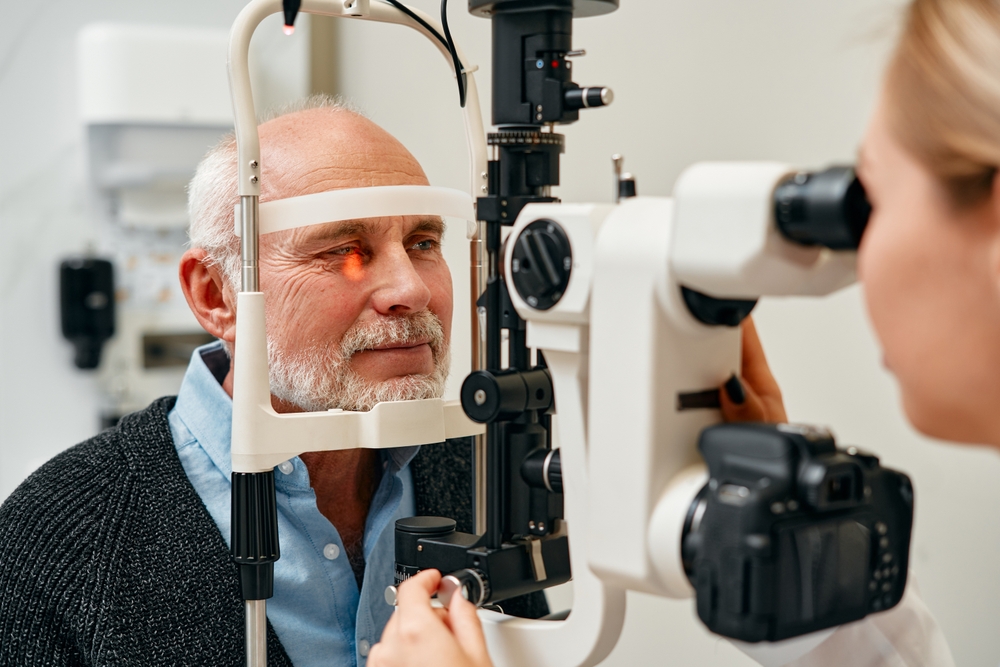Glaucoma is one of the leading causes of blindness in adults over sixty. One of the reasons that glaucoma leads to significant vision loss is that while it is treatable, it doesn’t present any symptoms in the early stages of the condition.
Once the condition has progressed to the point where it does cause visual symptoms, those symptoms will never go away. That’s why glaucoma is often called the “Silent Thief of Sight.”
However, as long as you stay vigilant, glaucoma can be diagnosed and treated early. The best way to do that is by being aware of what glaucoma is if you’re at risk for glaucoma and, most importantly, by having regular eye exams.
Keep reading to learn more about how to protect your vision from glaucoma!
What is Glaucoma?
Glaucoma is the name given to a group of eye conditions that all cause damage to the optic nerve. Your optic nerve is essentially what connects your eye to your brain.
Without it, signals couldn’t be sent to your brain about what you’re seeing.
Most of the time, glaucoma is caused by a higher-than-normal eye pressure.
Your intraocular pressure (IOP) usually builds up when the fluid that flows through your eye isn’t able to drain correctly. Of all the different forms of glaucoma, two are important to be aware of:

Open-Angle Glaucoma
Open-angle glaucoma is the most common form of glaucoma. In this type of glaucoma, your eye’s primary drainage channel, the angle between your iris and cornea, remains open.
But the smaller drainage channels around your eye, called the trabecular meshwork, become clogged or blocked. This form of glaucoma develops very slowly and causes a slow increase in eye pressure over time.
But eventually, the pressure puts strain on the optic nerve, damaging it and causing vision loss.
Angle-Closure Glaucoma
Angle-closure glaucoma is quite rare and only makes up a small percentage of glaucoma cases. However, it can cause rapid vision loss, so it’s important to be aware of it.
Angle-closure glaucoma occurs when the iris bulges, closing off the primary drainage between it and the cornea. This tends to cause a much faster buildup of IOP and, in turn, faster damage to the optic nerve.
When it occurs very suddenly, it’s called acute angle-closure glaucoma and is considered a medical emergency.
What Are the Most Common Symptoms of Glaucoma?
Open-angle glaucoma does not present any symptoms in the early stages. The earliest symptoms are the gradual loss of your peripheral vision.
This may start out with the sides of your vision appearing blurry. The more damage done to your optic nerve, the more your vision will begin to tunnel.

In late stage glaucoma, patients are only left with the very center of their vision. If you have any peripheral vision loss, see your eye doctor as soon as possible.
Ideally, you want to have your glaucoma diagnosed before that point, but it’s still important to get diagnosed and treated because further vision loss can still be significantly slowed. Acute angle-closure glaucoma, while much rarer, does actually have very noticeable symptoms, including blurry vision, severe eye pain, headache, nausea, and vomiting.
If you experience these symptoms, seek emergency medical care. The pressure inside your eye must be lowered quickly to avoid severe damage to the optic nerve.
Know Your Risk for Glaucoma
You may be at higher risk for glaucoma if you:
- Are over 55
- Are of African, Asian, or Hispanic descent
- Have diabetes
- Have hypertension (high blood pressure)
- Are very nearsighted or very farsighted
- Take corticosteroids over a long period of time
- Have a family history of glaucoma
Be aware of your risk and talk to your eye doctor about your risk factors for glaucoma. Your eye doctor will be able to tell you just how often you need to have regular eye exams to ensure you are not developing glaucoma.
Eye Exams Can Save Your Vision

Because most cases of glaucoma don’t have any early symptoms, the only way to know if you have it and get prompt treatment is through an eye exam. During a comprehensive eye exam, your eye doctor will be able to look at the inside of your eye to see if there is any damage to the optic nerve.
They can also measure your IOP to see if it’s high, which can help them determine if you’re likely to develop glaucoma even before there’s any damage to your optic nerve. Early detection of glaucoma means you will have less chance of losing your vision permanently.
The only way to get an early diagnosis, though, is through having regular eye exams.
How is Glaucoma Treated?
There is currently no cure for glaucoma, but it can be treated. Treatment can slow and even prevent further vision loss, allowing you to keep your vision for many years to come.
There are several treatment options for glaucoma. Your eye doctor may recommend one of the following treatments or combination of treatments based on your specific case:

Medication
There are eye drops that can be used to lower IOP. Your eye doctor may even prescribe these eye drops if you don’t have glaucoma but do have high IOP in order to prevent you from developing glaucoma.
Laser Procedures
There are minimally invasive treatments that use a laser to help make additional openings in the trabecular meshwork. This can promote a better flow of fluids and lower your IOP.
Glaucoma Surgery
There are several kinds of procedures for glaucoma. They may involve creating an opening in the eye for fluid to drain through or even inserting a small device to drain fluid, all with the goal of lowering your IOP.
Do you want to learn more about how you can protect your vision from glaucoma? Schedule an appointment at Williamson Eye Center in Baton Rouge, LA, today!



